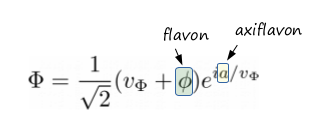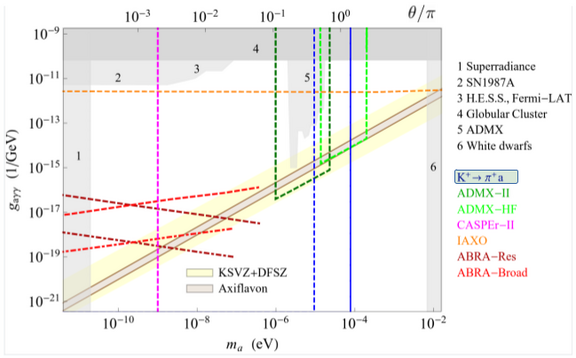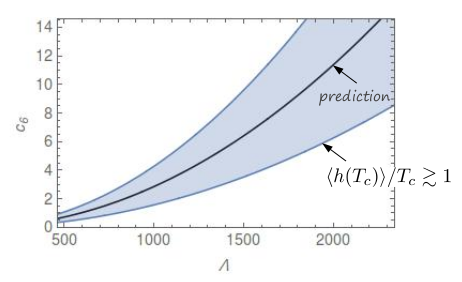Cosmology
Beyond weakly interacting massive particles (WIMPs), such as the lightest neutralino in supersymmetric theories (or composite dark particles), a promising candidate to explain the dark matter abundance in the universe is the axion. It arises in the Peccei-Quinn solution to the strong CP problem as a Pseudo-Goldstone boson of a spontaneously broken U(1)pQ, leading to a CP conserving vacuum. Interestingly, it can be embedded together with the flavon, that addresses the flavor hierarchies (see Flavor Physics), in a single complex scalar Φ [1], connecting flavor physics with cosmology via a solution to the strong CP problem.
Flavor changing couplings of this axiflavon as well as its interaction with photons gaγγ are predicted to good accuracy in terms of SM fermion masses. The plot shows the predicted correlation between the axion mass ma and gaγγ together with various experimental constraints. In addition to cosmological limits and axion searches, new results from flavor physics (in particular the expected NA62 limit on the decay K+ → π+a, depicted as a dashed blue line) are going to constrain significantly the viable parameter space.
Replacing the µ2 term with a dimension six operator |H|6/Λ2 seems a phenomenologically viable option to break electroweak symmetry [2]. Beyond that, it has interesting consequences on cosmology. In fact, the modified Higgs potential leads to a strong first order phase transition, just as required to generate the correct baryon abundance via electroweak baryogenesis [2,3], see plot on the left.
[1] L. Calibbi, FG, D. Redigolo, R. Ziegler, J. Zupan, 1612.08040
[2] FG, PRD 94 (2016) 015013
[3] C. Grojean, G. Servant, J. Wells, PRD71 (2005) 036001


